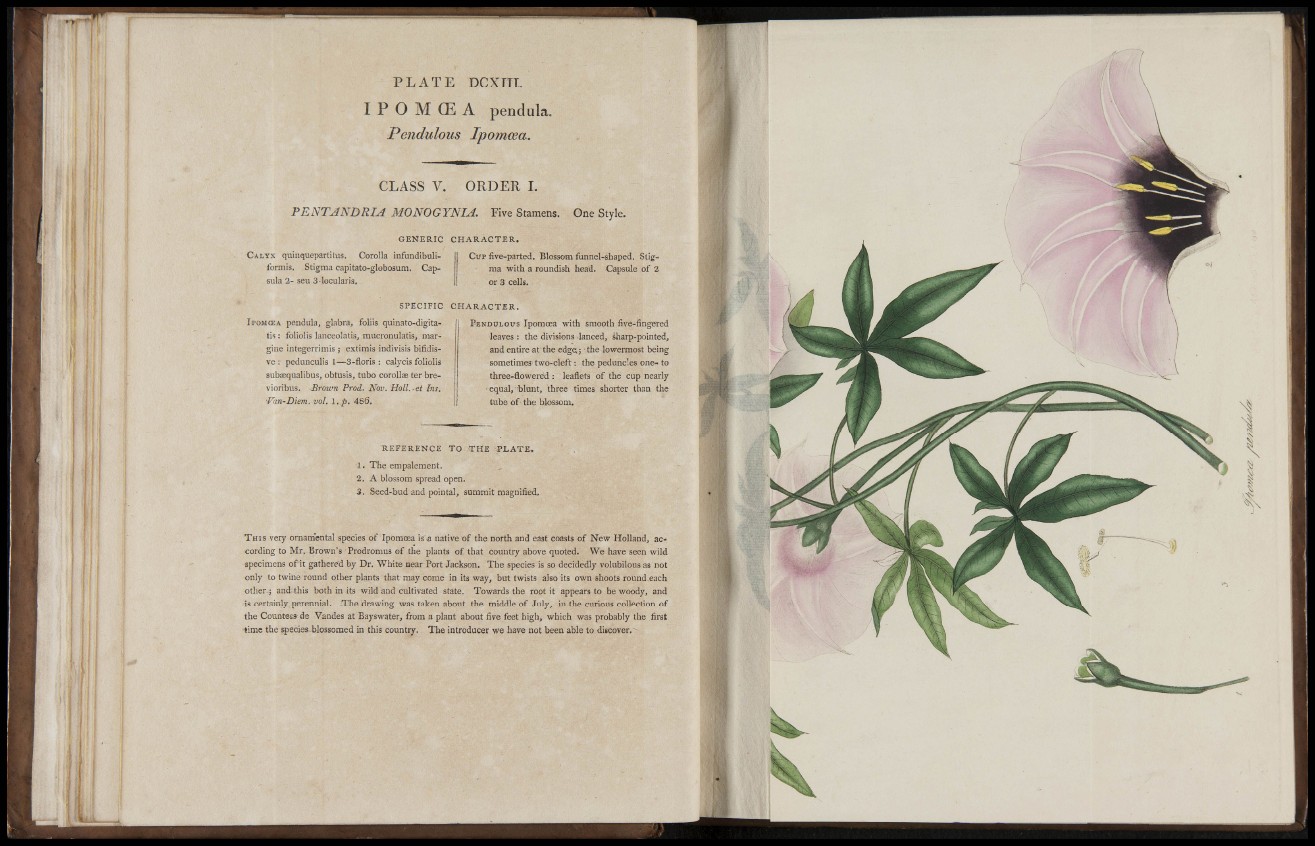
I é l
\ Ì
^ i
- 1
VI
iv
•h'i
<
PLATE DCXIII.
I P O M GE A pendula.
Pendulous Ipomcea.
CLASS V. ORDER I.
PENTANDRIA MONOGYNIA. Five Stamens. One Style.
GENERIC CHARACTER.
CALYX quinquepartltus. Corolla infundibuli-
Ibrmis. Stigma capitato-globosum. Capsula
2- seu 3-locularis.
CUP five-parted. Blossom funnel-shaped. Stigma
with a roundish head. Capsule of 2
or 3 cells.
SPECIFIC
IPOMCEA pendula, glabra, foliis quinato-digitatis
: foliolis lanceolatis, mucronulatis, margine
integerrimis ; extimis indivisis bifidisve
: pedunculis 1—3-florls : calycis foliolis
subsequalibus, obtusis, tubo corollae ter brevioribus.
Brown Prod. Nov, Holl..et Ins.
•Van-Diem. vol. \ .p. 4S6.
CHARACTER.
PENDULOUS Iporaoea with smooth five-fingered
leaves : the divisions -lanced, iliarp-pointed,
and entire at the edge^; the lowermost being
sometimes two-cleft: the peduncles one- to
three-flowered : leaflets of the cup nearly
• equal, blunt, three times shorter than the
tube of the blossom. • - r.-
REFERENCE TO THE PLATE,
1. The empalement.
2. A blossom spread open.
3. Seed-bud and pointal, summit magnified.
THIS very ornamental species of Ipomcea is a native of the north and east coasts of New Holland, according
to Mr. Brown's Prodromus of the plants of that country above quoted. We have seen wild
specimens of it gathered by Dr. White near Port Jackson. The species is so decidedly volubilous as not
only to twine round other plants that may come in its way, but twists also its own shoots round each
other; and this both in its wild and cultivated state. Towards the root it appears to be woody, and
is certainly perennial. The drawing was taken about the middle of July, in the curious collection of
the Countess^ de Vandes at Bayswater, from a plant about five feet high, which was probably the first
time the 3)ecies. blossomed in this country. The introducer we have not been able to discover.